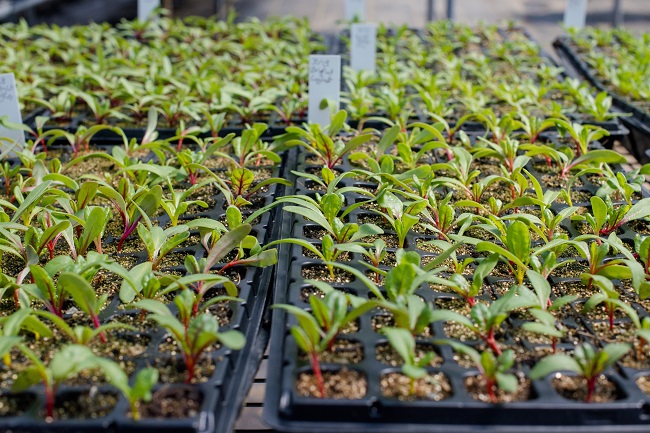
When you are growing plants from seed the most important thing to watch for is diseases that attack tiny seedlings. The best thing to do is start your seedlings in sterile seed starting mix. You can make your own mix by using one part peat moss and one part Vermiculite or Perlite. Some people, like me, use one part peat, one part vermiculite and one part perlite.
Don’t get all caught up in the details of this mix because what you are really doing is just giving the seeds a good place to stay warm and moist until they germinate. Don’t add any kind of fertilizers to your mix. At first just concentrate on getting the seeds to germinate and the seedlings to stand up strong.
Water the seedlings with plain water, not any kind of an organic blend. You never know what’s hanging out in a bottle of organic fertilizer, and keep in mind; you want the environment around the seedlings to remain sterile.
Once the seedlings are up and doing well, you can transplant them into small pots with a potting mix that contains some nutrients and then you can apply organic fertilizers like liquid seaweed extract.
Take measures from the start to prevent damping off. Damping off is fungal disease that occurs when the growing mix is too wet for too long and there is not enough air flow across the surface of growing mix.
Seeds like to be warm so if you put them on a heat mat made for gardening or place them under a warm light to keep the growing medium warm, the seeds germinate faster, and it will also help to dry out the growing medium between waterings. Don’t let it get too dry, but the growing medium should dry some before you water again. That’s why I like a growing medium with a little less peat moss so you can let it dry but re-wet it easily.
Position a fan so it constantly blows some air across your flat of seedlings. The air circulation will help prevent fungal diseases. Once your seedlings are up, they can be transplanted into small pots.
If you opt to start them in sterile seed starter blocks or small peat pots, you eliminate the chance of transplant shock when they need to go into a larger container.
Mike McGroarty is the owner of McGroarty Enterprises and the author of several books. You can visit his website at Freeplants.com and read his blog at Mikesbackyardnursery.com.
Related Articles & Free Email Newsletter Sign Up
How to Start Flower and Vegetable Plants in March
Plant Tissue Culture Creates a Lot of Plants at Little Expense
When to Start Seeds for a Vegetable Garden




Comment here